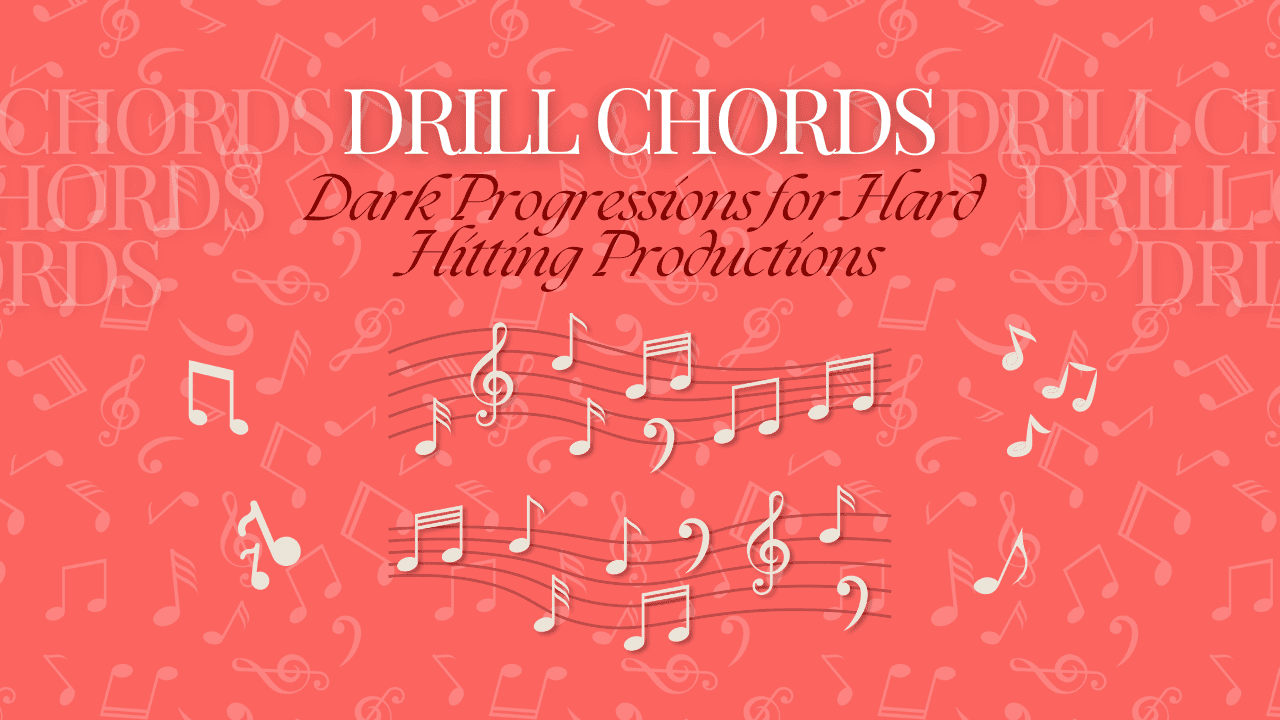Are you looking for a way to give your musical productions an edge? Do you want to make them sound darker, heavier, and more dynamic? If so, then exploring drill chords is a great starting point. In this guide, we’ll break down what drill chords are and how they can help improve your tracks. We’ll also take it one step further by giving you 5 dark progressions.
So if you require some guidance on crafting hard-hitting drill chord progressions that keep heads nodding, look no further, as this post has everything you need!
TL;DR: To master drill chords and create hard-hitting productions, check out our simple guide on 5 dark progressions. This tutorial will help you add depth and intensity to your music. Additionally, boost your music’s reach and engagement by using our Buy Soundcloud Plays service to enhance your presence and effortlessly attract more listeners.

What are Drill Chords?
In its most basic form, a drill chord is an extended guitar, or keyboard chord played in several octaves at once. It often has a “droning” effect and adds tension to the track. It’s used extensively in genres such as rap, hip-hop, and trap music. These chords can range from simple two-note combinations to complex six or seven-note chords.
Drill chords are typically played in a low register, typically between the 4th and 5th octave, as this adds weight and gravity to the part. They’re often paired with 808s for extra heaviness. Although simple to play, these chords can be tricky to master. If you want to produce professional-sounding music, it’s important to pay attention to things like the timing and articulation of your chords.
5 Dark Progressions for Hard-Hitting Tracks
Now that we know what drill chords are let’s look at some progressions that can help you create hard-hitting tracks.
1. C minor – Ab major
The C minor to Ab major chord progression is a must-have in any producer’s toolkit. Its simplicity brings out its power, making it the perfect foundation for strong melodies – since these two chords share most of their notes! You can hear this particular melody in several rap hits like Lil Baby’s bangers, J Cole’s “Middle Child”, Kodak Black’s “Walk” and Chief Keef’s classic track “Love Sosa.” Get creative with your music by experimenting with relative chords similar to those used in chart-topping records.
2. Ab minor 7 – Eb7sus2 – Eb minor
This progression is the perfect way to add tension and drama to your songs. By using closely related chords in descending order, you’ll be able to create an atmosphere of suspense that will keep listeners on the edge of their seats. Try adding some reverb or delay effects to these chords as well – they’ll help give your track that dark, moody feel.
3. Eb minor – Ab minor
This dark chord progression creates a feeling of despair and dread. It’s used in many genres, including trap, hip-hop, and R&B. The Eb minor to Ab minor transition is a great way to add an air of mystery to your tracks while simultaneously creating an emotional connection with the listener. Artists like Drake, Future, and Travis Scott have used this chord progression in many of their productions.
4. C minor
This one-note chord is as dark as it gets. It can be used to provide a sense of tension and release in your tracks or simply to add atmosphere. Producers like Metro Boomin have successfully employed this chord in many of their trap hits, including “Bad and Boujee”.
5. G minor – Ab major
This chord progression is guaranteed to add an air of darkness and intensity to your track. It’s used extensively in rap and hip-hop, particularly for gritty bangers like “Mask Off” by Future or 21 Savage’s “Bank Account”. You can also introduce some minor chords into the mix to create even more tension and drama.
Conclusion
We hope this article has given you an insight into using drill chords and crafting dark progressions. Drill chords can be a great tool for adding power and tension to your music, so don’t be afraid to experiment and get creative with them!
Once you master the art of creating dark progressions, you’ll have all the key ingredients to create hard-hitting tracks. Good luck!

